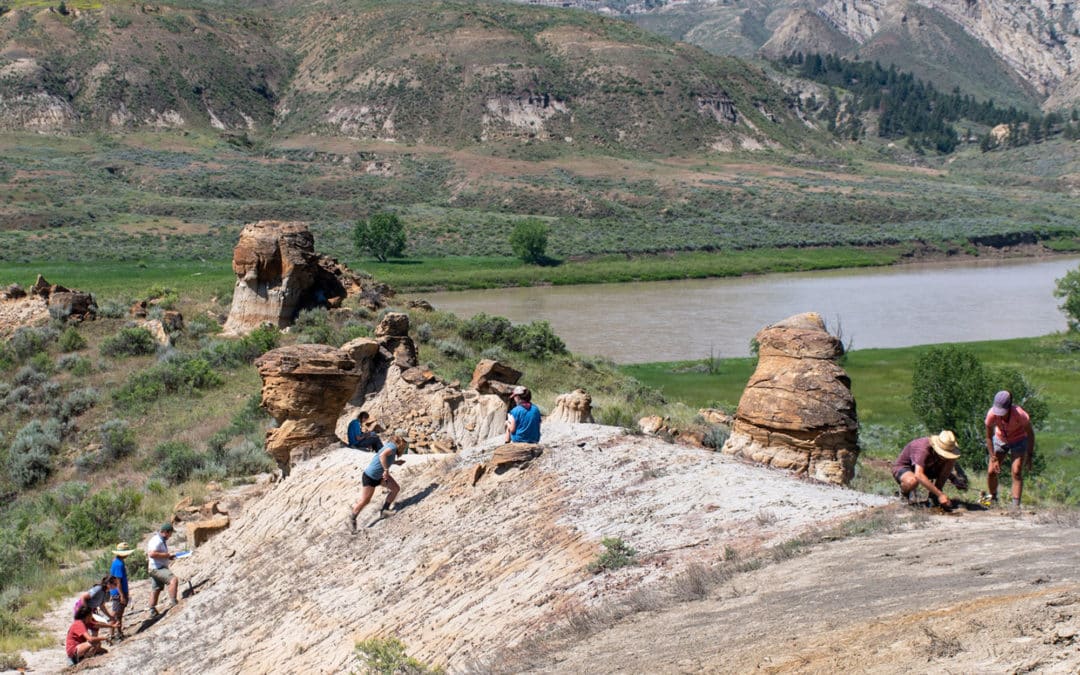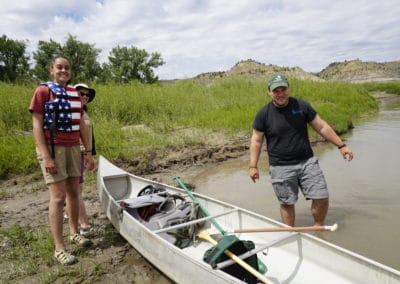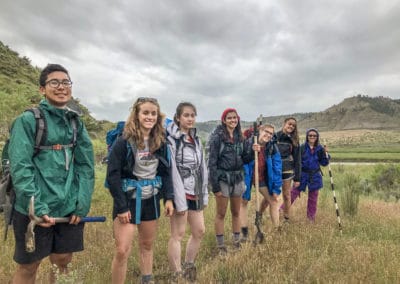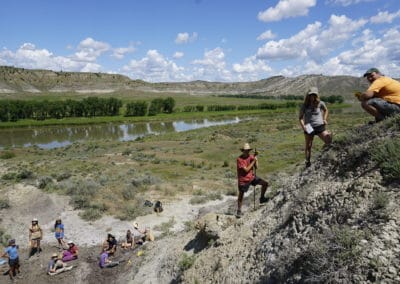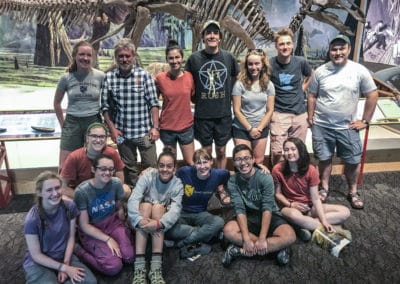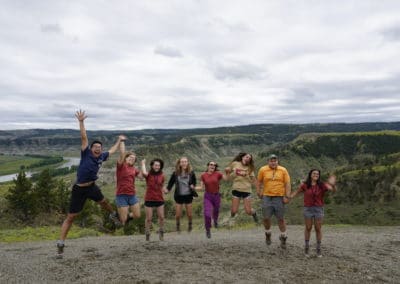Keck Montana measuring section along the Missouri River.
Keck Montana conquered the muddy Cretaceous in exquisite fashion. The Macalester crew consisted of Ray Rogers, Kristi Curry Rogers, Jeff Thole, and sophomore Chloe Kahn (peer mentor), along with first-year students Sun Tun and Katherine Irving. Student crew members from other institutions included Asha Lang (Smith College), Abby Roat (Colorado College), Peter Zimmermann (Oberlin College), Sadie Gomez (Amherst College), Nolan Clark (Pomona College), and Kaylee Velasquez (Union College). The work began in the labs at Macalester, where this diligent Keck crew learned how to recover (via wet sieving), sort, and identify the tiny fossilized bones and teeth of animals that lived in the Late Cretaceous of Montana (the faunal lists they compiled include dinosaurs, mammals, turtles, amphibians, and lots of fish). After tuning up on the scopes, identifying thousands of fossils, working through image analysis protocols and data analysis, and writing two GSA abstracts, we flew to Montana to begin the field adventure. Our first stop was the famous Hell Creek Formation near Jordan Montana (T. rex country), where we focused on two of the sites that we first encountered in the lab. The Hell Creek camp along the shores of Fort Peck Reservoir proved to be the perfect setting to hone field skills and learn how to prospect for fossils and measure section. Our hosts, University of Washington grad students Luke Weaver and Brody Hovatter, gave us the grand tour of classic Hell Creek sites – we even collected samples of the K-Pg boundary! After a few days in the Hell Creek we moved on to the small town of Malta, Montana, where the crew attended the “Judith River Formation Symposium,” which was hosted by the Great Plains Dinosaur Museum. Attendees included famous dinosaur paleontologists Jack Horner and Phil Currie (both of whom joined us for dinner), among others. After a few focused days of talks on Judith River rocks and dinosaurs, we continued on to the Upper Missouri River Breaks National Monument, and the heart of Judith River country. After provisioning up, we hit the rocks and got to work on our final fossil site, which was located in badlands along the Missouri River. In addition to collecting vertebrate microfossils on the surface, we also excavated the site and discovered several cool dinosaur bones, including vertebrae, toe bones, and one large chunk of a limb bone – all of which came from hadrosaur (duckbill) dinosaurs. After a few days in camp, and after surviving a few particularly memorable thunderstorms, we launched our canoes down river to explore a few more localities. After a few glorious days floating the river, we wrapped up our Montana adventure with a visit to the Museum of the Rockies, where we were treated to a behind the scenes tour from curator John Scanella. Two posters featuring the results of our work will be presented in September in Phoenix at GSA.

